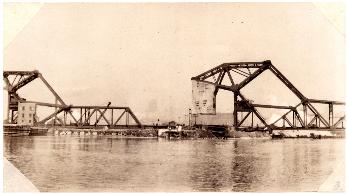As a prominent civil engineer in his field of study, Willis A. Slater contributed significantly to various engineering projects throughout his illustrious career until his untimely death in 1931. Not only did Slater serve as Director of Fritz Engineering Laboratory and Research Professor of Engineering Materials at Lehigh University, but he also worked closely with the Bureau of Standards as an Engineer Physicist during World War I in addition to his professorship at the University of Illinois. It was here, as Research Assistant Professor in Chicago, that he performed key experiments relating to materials testing at the Duhrkop Oven Company, Corrugated Bar Company, Ford Motor Co., International Hall, Schulze Baking Co., and Niagara Silk Mills.
In addition to his research at the University of Illinois, once a year, Slater would accompany a civil engineering inspection trip composed of members of the senior class of civil engineering as well as other branches. During this journey to Chicago in 1929, they visited industrial centers and engineering projects of interest to gain an insight into fundamental principles of engineering, manufacturing processes of materials, and practical roles of civil engineers. In doing so, it would provide further enrichment to the education of these students who would soon enter the workforce.
Throughout their tours of various factories, plants, construction sites, and buildings, the students were able to acquire an adequate grasp of the practical aspects of civil engineering. Such places of interest they visited include the Illinois Steel Company Plant, American Bridge Company’s yards and fabricating shops, Universal Portland Cement Plant, West Side Sewage Treatment Plant, and construction sites of the La-Salle-Wacker Drive Building, Merchandise Mart, One La Salle Building, and Board of Trade Building. At the steel mills of the Illinois Steel Company, in particular, they were led through the transformation of raw ore to finished steel step by step. Bruce Johnston recounts, “It was certainly fascinating to watch an immense ladle of molten iron discharging its contents or to see a long red ingot of hot steel enter the rolling mill, to move swiftly back and forth and finally emerge in the shape of finished rail sections just seven minutes later.”

Bridge over channel of the Chicago River
Concluding the inspection trip, the group of both students and professors enjoyed a Saturday morning boat ride on the Chicago River, exploring numerous bridges spanning the river, some of which in various states of disrepair. While traveling on the river, they were granted the opportunity of seeing the work being done in changing and straightening the channel. Johnston notes that this excursion above all “proved to be one of the most popular events of the trip, particularly so because no walking was involved.”

Starting Up the Chicago River
By Daniella Fodera
